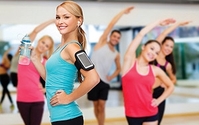
Wearables, schmearables. The place to be for health and fitness is on the smartphone, says Omediaworks.
Health and fitness may be two of the hottest categories when it
comes to smartphone use, but the appeal between the two categories (health and fitness) is decidedly different between Android and iPhone users.
After evaluating 500 million
monthly ad impressions on more than 400 of its mobile ad platforms and apps, Opera Mediaworks says iPhone users are more interested in health (62% vs. 58% for fitness), while Android users are more
interested in fitness (39% vs. 30%). Overall, incidentally, most health and fitness users are more likely to have an iPhone than an Android device.
In the United States, more
than 50% of all smartphone owners use their devices to learn about diet, exercise or other health topics, but only 23% of them access such sites more than once per week. Women are more likely to carry
their smartphones while exercising to listen to music, send or receive texts and e-mails or make phone calls. Men between the ages of 25 and 34 use their health and fitness apps the most, but watch
far less video when exercising than women, according to the findings. Tablets, on the other hand, had relatively low usage rates when it came to health and fitness use, says Larry Moores, VP of
analytics at Opera Mediaworks.
advertisement
advertisement
“From what people are telling us, the mobile phone is what they use when they’re exercising or looking for health
information,” Moores tells Marketing Daily. “Marketers of devices should look at the form factors of their devices, when looking at the health and fitness market. Apparently the
phone provides things that are missing from other devices.”
Meanwhile, for all the attention wearables and fitness trackers are getting, the market is still relatively small,
with only 3.6% of male exercisers and 1.7% of female exercisers using them.
“This is an audience that is very phone-oriented,” Moores says. “We saw a very
low use of wearables, which is not surprising because they’re so new.”
"People exercising" photo
from Shutterstock.